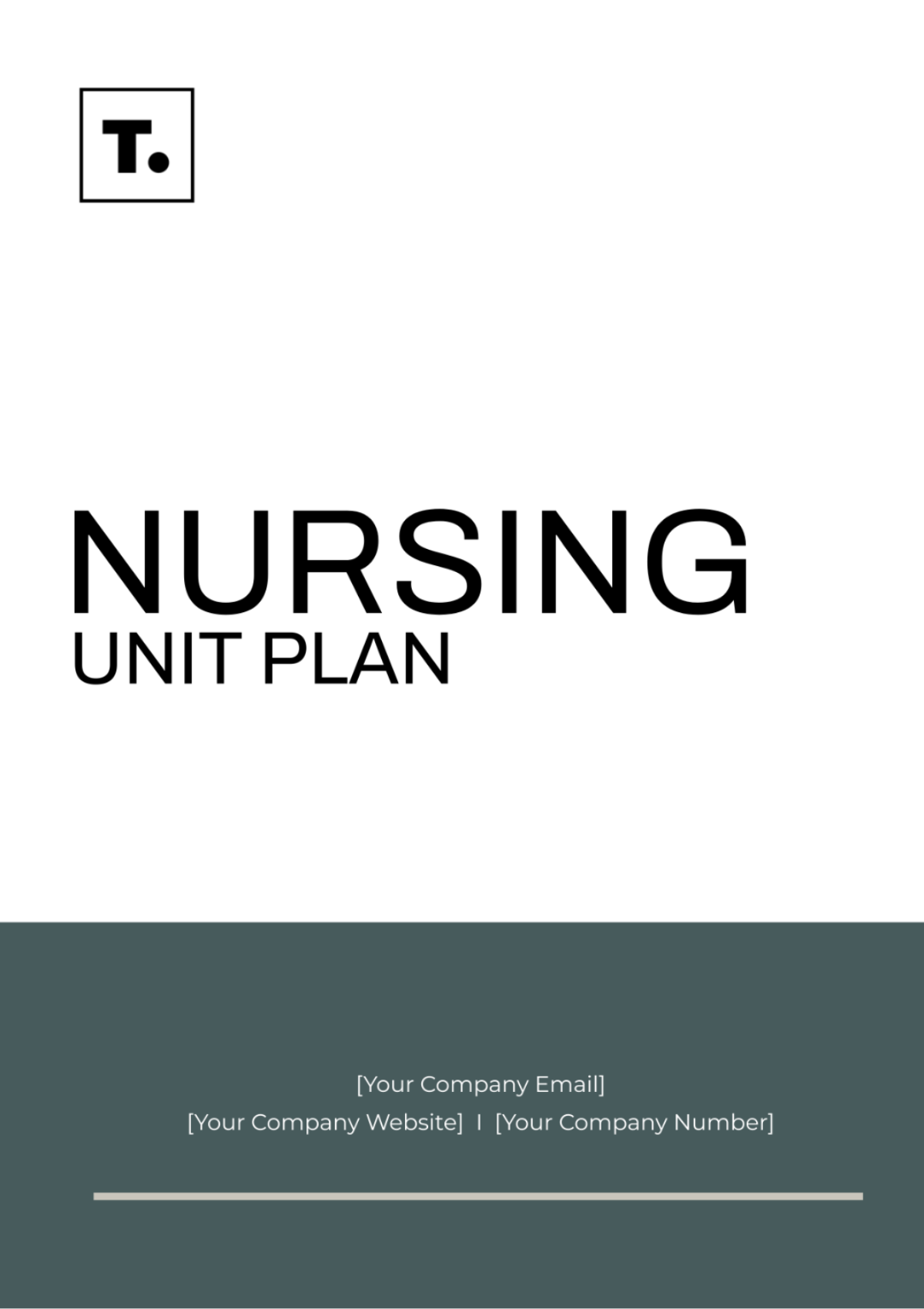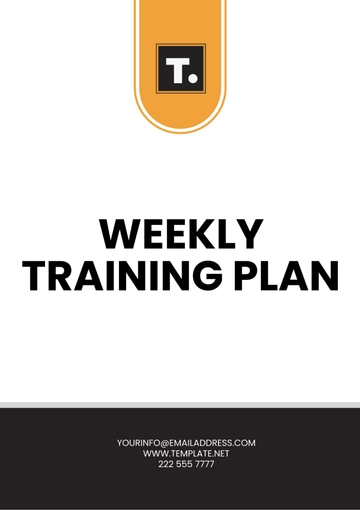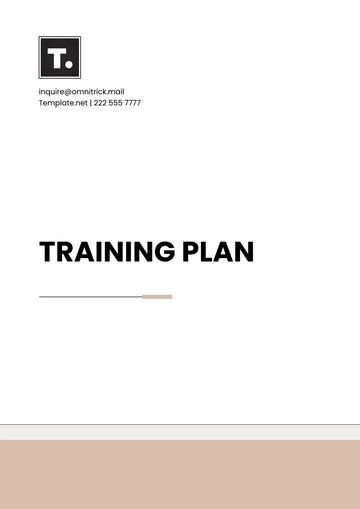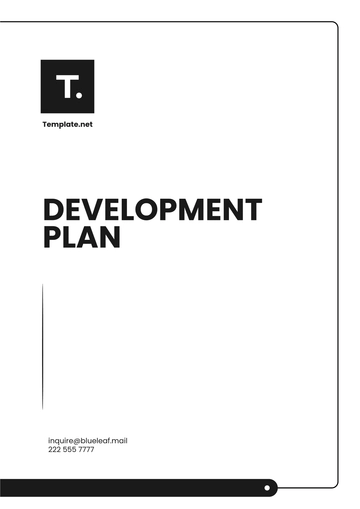Free Nursing Unit Plan

Prepared by: [Your Name]
Subject: Nursing Unit Management
Topic: Optimizing Patient Care and Resource Management
Date: [Date]
I. Introduction
The Orthopedic Care Unit at Mercy Hospital is a specialized unit dedicated to providing exceptional care to patients with orthopedic conditions, including fractures, joint replacements, and musculoskeletal injuries. Our mission is to deliver personalized, evidence-based care that promotes recovery, independence, and quality of life for every patient.
II. Strategic Objectives and Goals
Patient-Centered Care
Ensure every patient receives individualized care plans tailored to their specific needs, preferences, and cultural backgrounds.
Clinical Excellence
Strive for continuous improvement in clinical outcomes, infection control, and patient safety measures.
Staff Development
Provide ongoing education, training, and support to empower staff members and enhance their skills in orthopedic nursing.
Community Engagement
Foster partnerships with community resources and organizations to promote wellness, education, and access to orthopedic care services.
III. Operational Strategies
3.1 Staffing Plan
Day Shift: 3 Registered Nurses (RNs), 2 Licensed Practical Nurses (LPNs), 4 Certified Nursing Assistants (CNAs)
Night Shift: 2 RNs, 1 LPN, 3 CNAs
Utilize float pool staff for flexible staffing during peak periods or staffing shortages.
3.2 Training and Development
Conduct quarterly orthopedic care workshops and simulations to enhance clinical skills and knowledge. Offer certification programs in orthopedic nursing and wound care management. Facilitate mentorship programs for new hires and ongoing professional development opportunities.
3.3 Quality Improvement
Implement a monthly falls prevention task force to analyze trends, identify risk factors, and implement preventive measures. Conduct regular audits of infection control practices and medication safety protocols. Utilize Lean Six Sigma methodologies to streamline processes and reduce waste.
3.4 Communication Plan
Establish daily interdisciplinary rounds involving orthopedic surgeons, physical therapists, and case managers to coordinate care plans. Utilize a digital communication platform for real-time updates, handoffs, and patient status reports. Implement a patient and family communication strategy to enhance transparency, education, and engagement in care decisions.
IV. Patient Care Delivery
4.1 Care Models
Adopt the Team Nursing model for collaborative care delivery, ensuring continuity and consistency in patient care. Implement the Total Joint Care pathway for joint replacement patients, emphasizing early mobility, pain management, and discharge planning.
4.2 Rehabilitation and Mobility
Collaborate closely with physical and occupational therapists to develop individualized rehabilitation plans for each patient. Promote early mobilization and ambulation to prevent complications and improve functional outcomes.
4.3 Pain Management
Utilize multimodal pain management strategies, including non-pharmacological interventions, regional anesthesia techniques, and patient-controlled analgesia (PCA). Provide education on pain management options, side effects, and opioid safety to patients and families.
4.4 Patient Education
Offer pre-operative education classes to prepare patients for surgery, recovery expectations, and home care instructions. Provide post-operative education on wound care, medication management, activity restrictions, and follow-up appointments.
4.5 Infection Control
Adhere strictly to infection control protocols, including hand hygiene, aseptic techniques, and isolation precautions as needed. Educate staff and patients on infection prevention practices, including proper use of personal protective equipment (PPE).
V. Resource Management
5.1 Budget Allocation
Allocate funds for regular equipment maintenance, upgrades, and replacement to ensure safe and efficient care delivery. Invest in technology solutions such as electronic health records (EHRs), telemedicine platforms, and patient monitoring systems.
5.2 Supply Chain Management
Implement a centralized supply chain system to track inventory levels, minimize waste, and optimize ordering processes. Collaborate with vendors and suppliers to negotiate favorable contracts and pricing for medical supplies and equipment.
VI. Staffing and Recruitment
6.1 Recruitment Strategies
Utilize targeted recruitment campaigns to attract experienced orthopedic nurses with a passion for patient-centered care. Offer competitive salaries, benefits, and incentives to retain top talent and reduce turnover rates.
6.2 Retention Initiatives
Implement a mentorship program for new hires to facilitate integration into the unit and promote job satisfaction. Provide opportunities for career advancement, specialty certification, and continuing education to support staff retention and professional growth.
6.3 Performance Management
Conduct regular performance evaluations based on established metrics, including clinical competency, teamwork, and patient satisfaction. Recognize and reward exceptional performance through merit-based bonuses, awards, and recognition programs.
VII. Emergency Preparedness
7.1 Emergency Response Plan
Develop and maintain comprehensive emergency response protocols specific to orthopedic emergencies, such as compartment syndrome, deep vein thrombosis (DVT), or surgical site infections (SSIs). Conduct regular emergency drills, simulations, and debriefings to ensure staff readiness and proficiency in emergency procedures.
7.2 Staff Training
Provide ongoing training and education on emergency response protocols, including rapid assessment, stabilization, and communication strategies. Collaborate with hospital-wide emergency preparedness committees and local EMS agencies for coordinated response efforts.
VIII. Ethical and Legal Considerations
8.1 Patient Advocacy
Uphold patient rights, autonomy, and dignity through informed consent, advance care planning, and shared decision-making processes. Ensure confidentiality, privacy, and security of patient information in compliance with HIPAA regulations and institutional policies.
8.2 Ethical Decision-Making
Provide ethics education and resources to support staff in navigating complex ethical dilemmas, end-of-life care decisions, and cultural considerations. Facilitate ethical consultations and interdisciplinary discussions to promote ethical awareness and sensitivity in patient care.
IX. Continuous Improvement and Innovation
9.1 Data Analytics
Utilize data analytics and benchmarking to monitor key performance indicators (KPIs), track outcomes, and identify opportunities for improvement. Implement evidence-based practice guidelines, protocols, and clinical pathways to standardize care practices and improve outcomes.
9.2 Innovation Initiatives
Foster a culture of innovation and creativity by encouraging staff input, ideas, and suggestions for process improvements and patient care innovations. Collaborate with research institutions, industry partners, and academic centers to leverage cutting-edge technologies, treatments, and best practices.
X. Conclusion and Future Directions
The Comprehensive Nursing Unit Plan for the Orthopedic Care Unit at Mercy Hospital outlines our commitment to excellence in orthopedic nursing, patient-centered care, and continuous quality improvement. By implementing these strategies and initiatives, we aim to achieve superior outcomes, enhance patient experiences, and advance the field of orthopedic care. We remain dedicated to serving our community with compassion, integrity, and clinical expertise.
- 100% Customizable, free editor
- Access 1 Million+ Templates, photo’s & graphics
- Download or share as a template
- Click and replace photos, graphics, text, backgrounds
- Resize, crop, AI write & more
- Access advanced editor
Enhance your nursing curriculum with Template.net's Nursing Unit Plan Template. This editable and customizable tool helps you outline objectives, lessons, and assessments. Create comprehensive and organized unit plans. Editable in our AI Editor Tool, this template ensures detailed and professional planning, supporting effective nursing education and training.
You may also like
- Finance Plan
- Construction Plan
- Sales Plan
- Development Plan
- Career Plan
- Budget Plan
- HR Plan
- Education Plan
- Transition Plan
- Work Plan
- Training Plan
- Communication Plan
- Operation Plan
- Health And Safety Plan
- Strategy Plan
- Professional Development Plan
- Advertising Plan
- Risk Management Plan
- Restaurant Plan
- School Plan
- Nursing Home Patient Care Plan
- Nursing Care Plan
- Plan Event
- Startup Plan
- Social Media Plan
- Staffing Plan
- Annual Plan
- Content Plan
- Payment Plan
- Implementation Plan
- Hotel Plan
- Workout Plan
- Accounting Plan
- Campaign Plan
- Essay Plan
- 30 60 90 Day Plan
- Research Plan
- Recruitment Plan
- 90 Day Plan
- Quarterly Plan
- Emergency Plan
- 5 Year Plan
- Gym Plan
- Personal Plan
- IT and Software Plan
- Treatment Plan
- Real Estate Plan
- Law Firm Plan
- Healthcare Plan
- Improvement Plan
- Media Plan
- 5 Year Business Plan
- Learning Plan
- Marketing Campaign Plan
- Travel Agency Plan
- Cleaning Services Plan
- Interior Design Plan
- Performance Plan
- PR Plan
- Birth Plan
- Life Plan
- SEO Plan
- Disaster Recovery Plan
- Continuity Plan
- Launch Plan
- Legal Plan
- Behavior Plan
- Performance Improvement Plan
- Salon Plan
- Security Plan
- Security Management Plan
- Employee Development Plan
- Quality Plan
- Service Improvement Plan
- Growth Plan
- Incident Response Plan
- Basketball Plan
- Emergency Action Plan
- Product Launch Plan
- Spa Plan
- Employee Training Plan
- Data Analysis Plan
- Employee Action Plan
- Territory Plan
- Audit Plan
- Classroom Plan
- Activity Plan
- Parenting Plan
- Care Plan
- Project Execution Plan
- Exercise Plan
- Internship Plan
- Software Development Plan
- Continuous Improvement Plan
- Leave Plan
- 90 Day Sales Plan
- Advertising Agency Plan
- Employee Transition Plan
- Smart Action Plan
- Workplace Safety Plan
- Behavior Change Plan
- Contingency Plan
- Continuity of Operations Plan
- Health Plan
- Quality Control Plan
- Self Plan
- Sports Development Plan
- Change Management Plan
- Ecommerce Plan
- Personal Financial Plan
- Process Improvement Plan
- 30-60-90 Day Sales Plan
- Crisis Management Plan
- Engagement Plan
- Execution Plan
- Pandemic Plan
- Quality Assurance Plan
- Service Continuity Plan
- Agile Project Plan
- Fundraising Plan
- Job Transition Plan
- Asset Maintenance Plan
- Maintenance Plan
- Software Test Plan
- Staff Training and Development Plan
- 3 Year Plan
- Brand Activation Plan
- Release Plan
- Resource Plan
- Risk Mitigation Plan
- Teacher Plan
- 30 60 90 Day Plan for New Manager
- Food Safety Plan
- Food Truck Plan
- Hiring Plan
- Quality Management Plan
- Wellness Plan
- Behavior Intervention Plan
- Bonus Plan
- Investment Plan
- Maternity Leave Plan
- Pandemic Response Plan
- Succession Planning
- Coaching Plan
- Configuration Management Plan
- Remote Work Plan
- Self Care Plan
- Teaching Plan
- 100-Day Plan
- HACCP Plan
- Student Plan
- Sustainability Plan
- 30 60 90 Day Plan for Interview
- Access Plan
- Site Specific Safety Plan





























